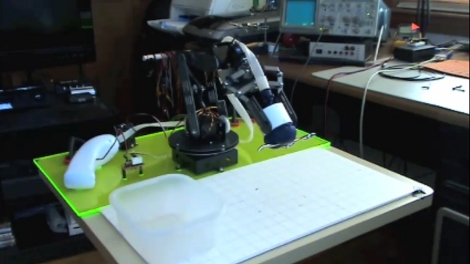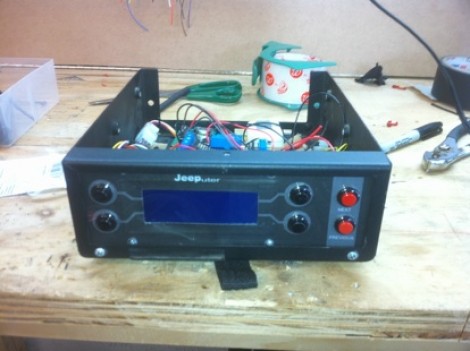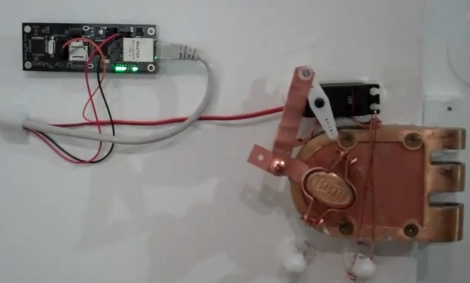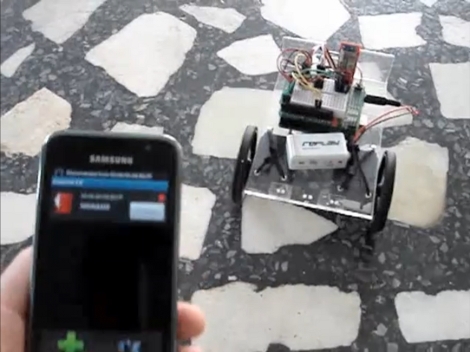
Here’s an inexpensive way to build your own jamming gripper. [Steve Norris] combined a robot arm with a few inexpensive items to achieve similar results as the original. Much like the last DIY version he started with a balloon and some coffee grounds, but instead of using his own body as a vacuum pump he sourced a Reynolds Handi-Vac, an inexpensive food vacuum sealer. It connects to the balloon using some plastic tubing, and sucks all of the air out, locking the coffee grounds around an object for a firm grip. The video after the break even shows the gripper picking up two aspirin. At first we thought a servo motor was being used to seal off the tube once the air had been pumped out. Instead, it is covering a hole in the tubing, which breaks the vacuum when it’s time to let go of an object.
Continue reading “Jamming Gripper Completes Robot Drug Dealer”
















